The safest mushroom in the UK for novice foragers with the only look-a-like being a football when spotted from afar.
Home / Mushroom Guide /
Giant Puffball
Giant Puffball
| Mushroom Type | |
| Common Names | Giant Puffball (EN), Coden Fwg Enfawr (CY), Purchawica Olbrzymia (PL), Óriás Pöfeteg (HU) |
| Scientific Name | Calvatia gigantea |
| Synonyms | Langermannia gigantea, Lycoperdon giganteum |
| Season Start | Jul |
| Season End | Sep |
| Average Mushroom height (CM) | 0 |
| Average Cap width (CM) | 20-35 |
Fruiting Body
20-35cm typically but can occasionally be found much larger than that. White to off-white with a fine velvet like surface when young becoming smooth and papery. The inside of the fruiting body will turn to brown mature spores and these will be released when the mushroom ages, is damaged or even blown across a field like tumbleweed.
Stem
No stem although sometimes they can still be connected to the ground with a fine root like filament..
Habitat
Grasslands, pasture, lawns, commons and roadsides. Found in rings, troops or individually. You will also find these in and around open woodland. They like to hide in amongst nettles and scrub. We have found them on steep sided woodland banks too.
Possible Confusion
The only thing a Giant Puffball can be confused with is a football from a distance or possibly a Mosaic Puffball (Lycoperdon utriforme), pictured although the Mosaic Puffball has warts on the skin, the Giant Puffballs surface is smooth or maybe slightly velvety.
Spore Print
Yellow/brown. Spherical with fine warts. The spores come from the inside of the fruiting body and are brown. The ‘skin’ has come away in the image revealing the large mass of spores.
Taste / Smell
Excellent. Can be sliced and fried like a steak or breaded and fried for a better texture.
Frequency
Fairly common.
Other Facts
This fungi has the most progeny of any living thing producing up to seven trillion spores on average. It has been estimated that if all the spores from two generations grew into mushrooms, they would produce something 800 times the volume of the Earth.
The spores used to be used by blacksmiths for burns and as a coagulant for staunching wounds.
Breathing in the spores of this fungi can cause Lycoperdonosis a nasty lung disease so care should be taken when handling mature specimens.



 (69 votes, average: 3.78 out of 5)
(69 votes, average: 3.78 out of 5)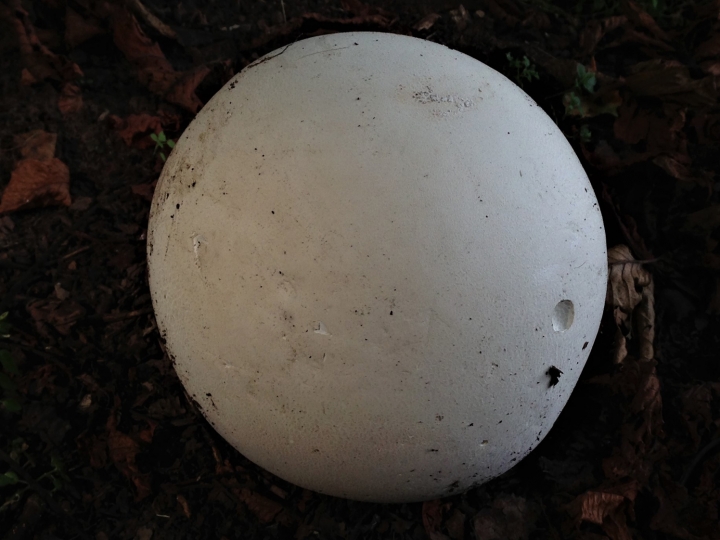















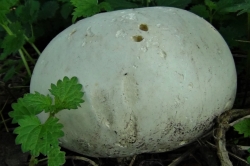

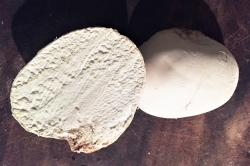

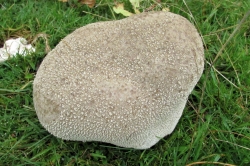
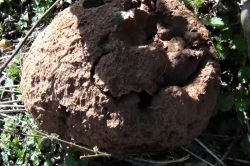






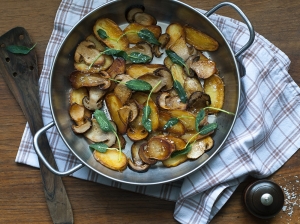






Leave a Reply